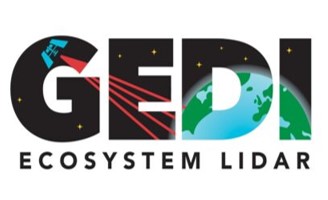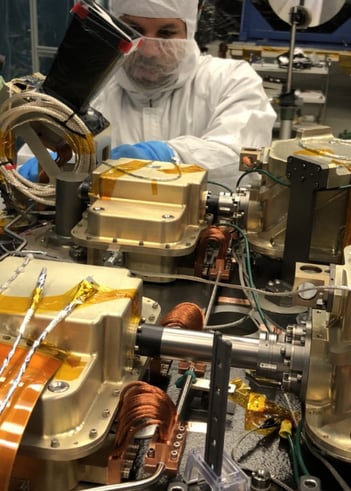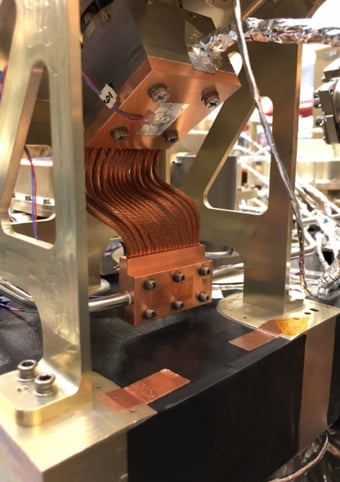
NASA's Global Ecosystem Dynamics Investigation (GEDI) Mission Launches with TAI's CuTS On Board

I am thrilled to report that SpaceX recently launched NASA's GEDI sensor on December 5th, 2018. The Global Ecosystem Dynamics Investigation (GEDI) sensor, destined for the International Space Station, is currently undergoing commissioning as an externally-attached payload on the ISS, and incorporates a total of nine of TAI's Copper Thermal Straps (CuTS®); six on GEDI's Laser Beam Dithering Units, and three on the Star Trackers.

The GEDI Mission
"The Global Ecosystem Dynamics Investigation (GEDI) produces high resolution laser ranging observations of the 3D structure of the Earth. GEDI’s precise measurements of forest canopy height, canopy vertical structure, and surface elevation greatly advance our ability to characterize important carbon and water cycling processes, biodiversity, and habitat.
GEDI’s data on surface structure are also of immense value for weather forecasting, forest management, glacier and snowpack monitoring, and the generation of more accurate digital elevation models. GEDI provides the missing piece – 3D structure – in NASA’s observational assets which enables us to better understand how the Earth behaves as a system, and guides the actions we can take to sustain critical resources.
The GEDI instrument is a geodetic-class, light detection and ranging (lidar) laser system comprised of 3 lasers that produce 8 parallel tracks of observations. Each laser fires 242 times per second and illuminates a 25 m spot (a footprint) on the surface over which 3D structure is measured. Each footprint is separated by 60 m along track, with an across-track distance of about 600 m between each of the 8 tracks. GEDI expected to produce about 10 billion cloud-free observations during its nominal 24-month mission length.
GEDI responds directly to observational priorities set by the National Academy of Sciences and NASA’s Science Mission Directorate, which emphasize the need for lidar vertical structure measurements to address key challenges in carbon cycling and biodiversity. The information derived from GEDI’s state-of-the-art lasers further catalyzes observations from the next generation of NASA missions, including the NASA ISRO Synthetic Aperture Radar (NISAR) and the Ice Cloud and Elevation Satellite-2 (ICESat-2), among others. Additionally, GEDI has a formal collaboration with the German Aerospace Center (DLR) to marry its lidar data with the DLR TanDEM-X SAR interferometry mission to produce wall-to-wall maps of canopy heights and other structure metrics."
The TAI team is thrilled to be a part of spaceflight history again, and greatly appreciates the opportunity to work with the NASA Goddard team on another successful mission!
Content Credit: https://gedi.umd.edu/mission Image Credit: NASA GSFC